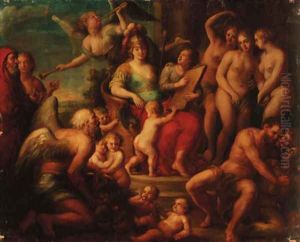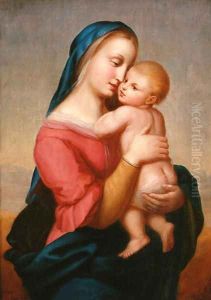Erasmus Quellinus I Paintings
Erasmus Quellinus I, also known as Erasmus Quellinus the Elder, was a Flemish painter born in 1584 in Antwerp, which was then part of the Spanish Netherlands. He is often confused with his more famous son, Erasmus Quellinus II, who was also a prominent painter of the Flemish Baroque period.
The elder Quellinus was not as well known as his son, and details about his life and work are relatively scarce. However, it is known that he was a contemporary of Peter Paul Rubens and worked during a time of great cultural and artistic prosperity in the region. He received his artistic training in the workshop of an unidentified master and became a master in the Antwerp Guild of Saint Luke in 1606.
Quellinus I's artistic style was influenced by the Mannerist tradition, which was gradually giving way to the Baroque style that would dominate the 17th century. His work included religious themes, which were common for the period, as well as mythological scenes and possibly portraits. Unfortunately, many of his works have not survived or have been wrongly attributed to other artists due to the lack of a distinct signature style that can be consistently identified as his own.
Erasmus Quellinus I passed away in 1640 in Antwerp. His legacy largely lives on through his son, Erasmus Quellinus II, who became one of the leading artists in Antwerp after Rubens. The younger Quellinus worked closely with Rubens and was responsible for translating many of his designs into engravings and tapestries. While the elder Quellinus did not achieve the same level of fame as his son, he played a role in the rich artistic environment of Antwerp during a pivotal moment in the development of Flemish art.

